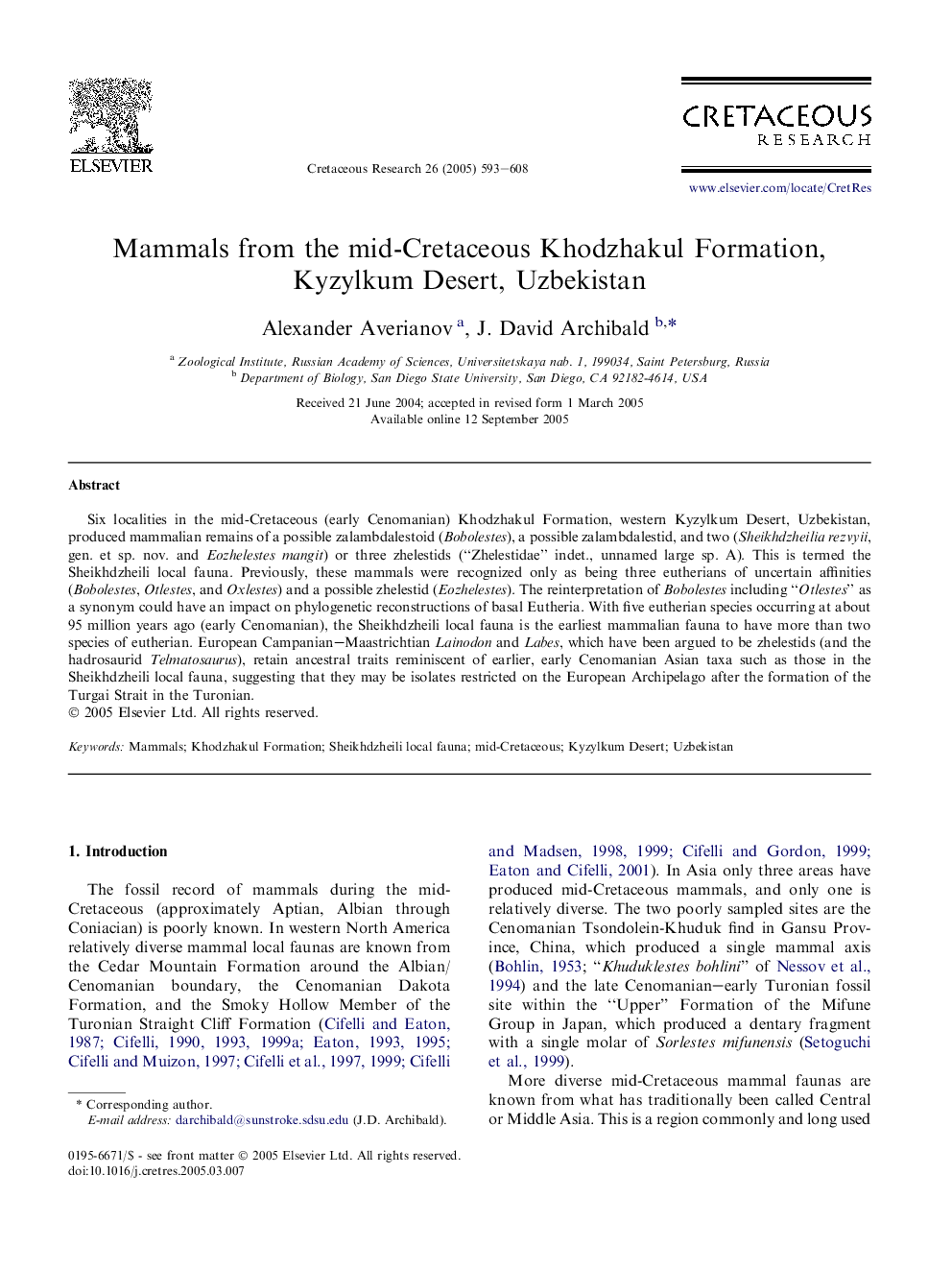| Article ID | Journal | Published Year | Pages | File Type |
|---|---|---|---|---|
| 9539052 | Cretaceous Research | 2005 | 16 Pages |
Abstract
Six localities in the mid-Cretaceous (early Cenomanian) Khodzhakul Formation, western Kyzylkum Desert, Uzbekistan, produced mammalian remains of a possible zalambdalestoid (Bobolestes), a possible zalambdalestid, and two (Sheikhdzheilia rezvyii, gen. et sp. nov. and Eozhelestes mangit) or three zhelestids (“Zhelestidae” indet., unnamed large sp. A). This is termed the Sheikhdzheili local fauna. Previously, these mammals were recognized only as being three eutherians of uncertain affinities (Bobolestes, Otlestes, and Oxlestes) and a possible zhelestid (Eozhelestes). The reinterpretation of Bobolestes including “Otlestes” as a synonym could have an impact on phylogenetic reconstructions of basal Eutheria. With five eutherian species occurring at about 95 million years ago (early Cenomanian), the Sheikhdzheili local fauna is the earliest mammalian fauna to have more than two species of eutherian. European Campanian-Maastrichtian Lainodon and Labes, which have been argued to be zhelestids (and the hadrosaurid Telmatosaurus), retain ancestral traits reminiscent of earlier, early Cenomanian Asian taxa such as those in the Sheikhdzheili local fauna, suggesting that they may be isolates restricted on the European Archipelago after the formation of the Turgai Strait in the Turonian.
Keywords
Related Topics
Physical Sciences and Engineering
Earth and Planetary Sciences
Palaeontology
Authors
Alexander Averianov, J. David Archibald,
